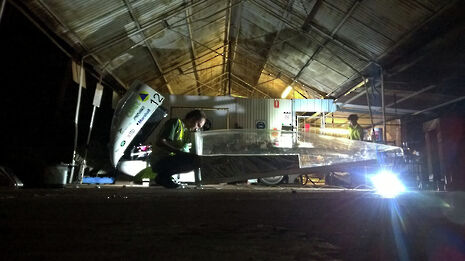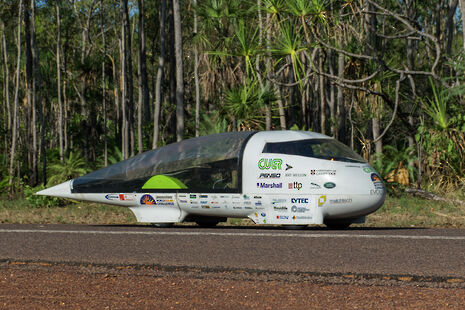Spotlight On: Competition – the eco-racing challenge
International scientific and engineering competitions can provide great experience when looking for a career in the STEM industries

Cambridge University Eco Racing (CUER) is stretching the boundaries of what a student society, in this hallowed establishment, means. The group exists in order to design and build solar-powered vehicles which they compete with in the biennial World Solar Challenge in Australia. But obviously, it’s not quite as simple as that.
Since June 2015, the society has employed one full-time member per academic year through the Department of Engineering. This has changed the level at which they can compete and, they hope, inspires students around the country to take their extra-curricular endeavours seriously in order to be competitive at global challenges. After being founded in 2007, it has been a long road for the team to reach the dizzying heights of a top UK team, but it is their future which is really interesting.
CUER are now launching an increasingly fierce, ambitious and wide-spread campaign for a top spot at the next World Solar Challenge in 2017, backed up by their most successful event in 2015. The team have taken on an official education partner to help them inspire more students, have a global Discovery Channel programme out in January 2017 and are a significant way into their fundraising budget of about £700,000 for this cycle.
Their latest vehicle, Evolution, has a top speed of almost 70mph, weighs 230kg and consumes just 1kW when cruising at around 40mph. The vehicle's achievement, covering 2,047km across the Outback in 2015, was made possible by the use of 2.36 square miles of GaAs triple-junction solar cells, usually used on industrial-grade satellites, and just 5kWh of lithium-ion batteries. This unique concept, devised by the team back in 2012, takes the focus of solar car design away from solar intake and instead prioritises aerodynamic performance. The team believe that this is a competitive approach, which it is certainly proving to be, and also opens up new areas of technology which can be brought into electric vehicles, regardless of the energy source.

This summer, with 12 students taking on full-time placements with the team for 10 weeks, they have completed the majority of the design work for their new vehicle which will be competing at the World Solar Challenge in October 2017. This vehicle, the third generation of the concept, takes the lessons learnt from the previous models and, with help from many partners, will improve both the design, systems protocols and manufacture of the next vehicle.
In addition to starting the development of their new vehicle this summer, the team also completed a 24-hour track race in Zolder, Belgium. Placing 10th and trialling a new charging system, most of the team were able to drive the car in competitive circumstances for the first time, and by all accounts it is a thrilling ride.
From working at top facilities in the UK to manufacture and test the vehicle, to working with startups and their prototype technologies, CUER offers great opportunities to those interested in technology to work with many types of companies and products. Recently they have undertaken aerodynamics testing of our full vehicle at the MIRA wind-tunnel.
With the media, business, events and operations parts of the team rapidly expanding to keep up with the great achievements of the technical sub-team, new recruits are being sought in all areas.
Those interested in joining CUER can attend an introductory talk about the society which is open to all students and taking place at Lecture Theatre 2 in the Engineering Department at 1pm on 12th October. Alternatively, those with more specific questions or unable to attend can contact CUER by emailing join@cuer.co.uk.
 News / Eight Cambridge researchers awarded €17m in ERC research grants27 December 2025
News / Eight Cambridge researchers awarded €17m in ERC research grants27 December 2025 News / Downing investigates ‘mysterious’ underground burial vault 29 December 2025
News / Downing investigates ‘mysterious’ underground burial vault 29 December 2025 Lifestyle / Ask Auntie Alice29 December 2025
Lifestyle / Ask Auntie Alice29 December 2025 Sport / Hard work, heartbreak and hope: international gymnast Maddie Marshall’s journey 29 December 2025
Sport / Hard work, heartbreak and hope: international gymnast Maddie Marshall’s journey 29 December 2025 Interviews / Meet Juan Michel, Cambridge’s multilingual musician29 December 2025
Interviews / Meet Juan Michel, Cambridge’s multilingual musician29 December 2025








